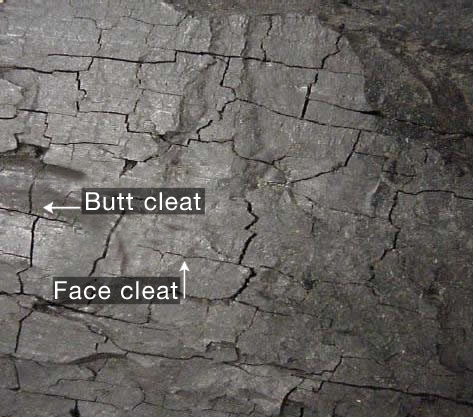Permeability: degree of fracturing
Coal seams have natural fractures, known as cleats. Cleats act as a major transport system
for gas and water flow within a coal seam. There are two sets of cleats in coal, face and
butt cleats. Face cleats are longer than butt cleats, hence directional anisotropy in coal
permeability results from this phenomenon. Permeability of coal increases with cleat density
and cleat width. The flow capacity of fractured media depends almost entirely on the number
and width of fractures and their continuity (Dabbous et al. 1974). Lingard, Phillips and Doig
(1984) showed that the dimensions of fractures influence coal permeability. The greater the
fracture, the higher is the permeability of the coal. Flow through cleats is generally laminar
flow.
 Information relative to the cleat size and spacing in coal are useful in predicting permeability,
and generally the larger the cleat size and cleat density, the higher the permeability. Secondary
cleats also occur in coal as a result of induced stress and changes to coal geological structure
or mining. These fractures normally cause permeability to increase, but sometimes they do the
opposite and reduce the permeability, and such situations tend to occur in shear zones or near
magmatic intrusions. According to Hayes (1982) permeability in the fractured and crushed zone
ahead of the face side during mining is greater than permeability in the intact and solid coal
area.
Information relative to the cleat size and spacing in coal are useful in predicting permeability,
and generally the larger the cleat size and cleat density, the higher the permeability. Secondary
cleats also occur in coal as a result of induced stress and changes to coal geological structure
or mining. These fractures normally cause permeability to increase, but sometimes they do the
opposite and reduce the permeability, and such situations tend to occur in shear zones or near
magmatic intrusions. According to Hayes (1982) permeability in the fractured and crushed zone
ahead of the face side during mining is greater than permeability in the intact and solid coal
area.